Hi Susun,
I have lyme disease and people have been talking about osteoporosis a lot lately. What can I do to nourish my bones and help prevent osteoporosis? Thanks.
Susun’s response:
Every woman I know is concerned about osteoporosis. Frightening stories equate it with broken hips, bent spines, wheelchairs, and death—things we all want to avoid. What can we do? Should we take calcium supplements? Hormones? Fosamax? Can we rely on our green allies?
The Wise Woman tradition maintains that simple lifestyle choices—including, but not limited to, regular use of nourishing herbal infusions, medicinal herbal vinegars, yogurt, and seaweed—are sufficient to preserve bone and prevent breaks. And, further, that these lifestyle choices produce multiple health benefits, including reduction of heart disease and breast cancer, without the problems and risks associated with taking hormones. As for supplements, as we will see, they do more harm than good.
Forget Osteoporosis
First, we must rid ourselves of the idea that osteoporosis is important. In the Wise Woman Tradition, we focus on the patient, not the problem. There are no diseases and no cures for diseases. When we focus on osteoporosis, we cannot see the whole woman. The more we focus on disease, even disease prevention, the less likely we are to know how to nourish health / wholeness / holiness.
In fact, focusing our attention narrowly on the prevention of osteoporosis actually increases the incidence of breast cancer. The postmenopausal women with the highest bone mass are the most likely to be diagnosed with breast cancer. Women who take estrogen replacement to prevent osteoporosis, even for as little as five years, increase their risk of breast cancer by twenty percent; if they take hormone replacement, the risk increases by forty percent.
These risks might be vindicated if we could show a correlation between bone density and bone breakage, but there isn’t one. When I found myself at dinner years ago with Susan Brown, director of the Osteoporosis Information Clearing House, I asked her to point me in the direction of any study that shows a clear relationship between osteoporosis and broken bones. She smiled. “There are none.”
“In a recent study,” she continued. “Researchers measured the bone density of people over 65 who had broken bones. Twenty-five percent had osteoporosis. Twenty-five percent had high bone density. And fifty percent had normal density.” Notice that those with high bone density broke their hips as frequently as those with osteoporosis.
Get Flexible
If osteoporosis isn’t the problem, what is it? In a word: inflexibility. Flexible bones bend; stiff bones break. This holds true even if the flexible bone is thin, even if the stiff bone is thick. Think of a piece of dead pine wood. Though it may be thick, it is brittle and breaks easily. Think of a green pine twig, even a small one is nearly impossible to break. Flexible bones, whether thick or thin, bend rather than break.
Flexibility is synonymous with health in the Wise Woman Tradition. It is created by nourishing and tonifying. Bone flexibility is created by nourishing the bones and tonifying the muscles around them. Tonifying is as important as nourishing, but because we are herbalists, let’s focus on the benefits nourishing herbs offer to women who wish to have strong, flexible bones.
Nourishing Our Bones
Old age does not make weak bones. Poor nutrition makes weak bones. What are bones made of? Like all tissues, they contain protein. They are rich in minerals, not just calcium, but also potassium, manganese, magnesium, silica, iron, zinc, selenium, boron, phosphorus, sulphur, chromium, and dozens of others. And in order to use those minerals, vitamin D must be present and the diet must contain high-quality fats.
Bones Need Protein
I have heard, and no doubt you have too, that animal protein leaches calcium from the bones. This is only half true. All protein, whether from meat, beans, soy, grains, or vegetables, uses calcium in digestion. Protein from soy is especially detrimental to bone health; soy is not only naturally deficient in calcium, it also directly interferes with calcium uptake in the bones. Traditional diets combine protein and calcium (e.g. seaweed with tofu, tortillas made from corn ground on limestone with beans, and melted cheese on a hamburger). Protein-rich herbs such as stinging nettle, oatstraw, red clover, and comfrey leaf provide plenty of calcium too, as do yogurt, cheese, and milk (which also provide the healthy fats needed to utilize the minerals). Limiting protein limits bone health. Increasing mineral-rich proteins increases bone health.
Bones Need High-Quality Fats
Hormones are kinds of fats, and cholesterol is the precursor to many of them. Post-menopausal bone problems do not, to my mind, arise from a lack of estrogen, but from a lack of fat. If the diet is deficient in good-quality fats, hormones will be produced in inadequate amounts. And vitamin D, a hormone-like vitamin, will not be utilized well. Further, mineral absorption is dependent on fats. A low-fat diet, in my opinion, makes it quite difficult to have healthy bones.
Bones Need Minerals
Bones do need calcium, and they are the last to get it, so our diets need to be very rich in this mineral. But to focus on calcium to the exclusion of other minerals leads to broken bones, for calcium is brittle and inflexible. Think of a piece of chalk, calcium carbonate, and how easily it breaks. A six-and-a-half year study of 10,000 white women over the age of 65 found that “Use of calcium supplements was associated with increased risk of hip and vertebral fracture; use of Tums™ antacid tablets was associated with increased risk of fractures of the proximal humerus.” The other minerals found in bone lend it flexibility. When we get our calcium from herbs and foods (containing a multitude of minerals) we nourish healthy bones.
Extracting Minerals
From the Wise Woman perspective, the perfect way to maintain bone health, bone flexibility, and resistance to fracture is to use mineral-rich herbs and foods. Because minerals are bulky, and do not compact, we must consume generous amounts to make a difference in our health. Just as eating a teaspoon of carrots is laughable, so is taking mineral-rich herbs in capsule or tincture form. Because minerals are rocklike, we need to break open cell walls to get at them. Raw, fresh foods do not deliver minerals to our bodies.
To extract minerals, we need heat, time, and generous quantities of plant material. I prefer to extract minerals into water or vinegar. To make a nourishing herbal infusion, I pour one quart / liter boiling water over one ounce / 30 grams of dried herb in a canning jar, covering it tightly, and letting it brew overnight. In the morning, I strain out the mineral-rich liquid and drink it—over ice or heated, with honey or milk, mixed with black tea, seasoned with mint, spiked with rum, however you want it. You can drink the entire quart in one day, but do finish it within two.
My favorite nourishing herbal infusions are made from oatstraw (Avena sativa) or nettle (Urtica dioica) or red clover (Trifolium pratense) or comfrey leaves (Symphytum uplandica). I sometimes add a little bit of aromatic herb such as peppermint (Mentha pipperata), lemon balm (Melissa off.), or bergamot (Monarda didyma) to change the flavor.
To extract minerals from fruits and vegetables, I cook them for long periods of time, or until there is color and texture change, evidence that the cell walls have been broken. Kale cooked for an hour delivers far more mineral to your bones than lightly steamed kale. Fresh juices contain virtually no minerals. Cooking maximizes the nutrients available to us, especially the minerals.
Herbs Are Mineral Powerhouses
Eating a cup of cooked greens every day is difficult, even for the most motivated woman. But drinking nourishing herbal infusions, eating seaweeds, and using medicinal herbal vinegars is easy. They are tasty, fun to prepare and use, and add a big nutritional plus with virtually no calories attached. Nourishing herbs and garden weeds are typically far richer in minerals than ordinary foodstuffs. Not only are nourishing herbs exceptional sources of minerals, their minerals are better at preventing bone breaks than supplements.
The ability of herbs to counter osteoporosis may be more complex than their richness of minerals, however. The minerals in green plants seem to be utilized more readily by the body and to be ideal for keeping bones healthy. Dr. Campbell, professor of Nutritional Biochemistry at Cornell University, has done extensive research in rural China where the lowest known fracture rates for mid-life and older women were found. He says, “The closer people get to a diet based on plant foods and leafy vegetables, the lower the rates of many diseases, including osteoporosis.”
In Summation
My own experiences in helping women regain and maintain bone density and flexibility have led me to believe that lifestyle modifications work exceptionally well for motivated women who wish to avoid the risks and expense of long-term pill use. Nourishing herbal infusions, mineral-rich herbal vinegars, yogurt, and seaweed, combined with attention to tonification of the muscles, unfailingly increases bone density and creates flexible, healthy bones and women.
The 6 Steps to Bone Health, in the Wise Woman Way tradition:
Step 1. Collect information
Calcium is, without a doubt, the most important mineral in your body. In fact, calcium makes up more than half of the total mineral content of your body. Calcium is crucial to the regular beating of your heart, your metabolism, the functioning of your muscles, the flow of impulses along your nerves, the regulation of your cellular membranes, the strength of your bones, the health of your teeth and gums, and your vital blood-clotting mechanisms. Calcium is so critical to your life that you have a gland (the parathyroid) that does little else than monitor blood levels of calcium and secrete hormones to insure optimum levels of calcium at all times.
When you consume more calcium than you use, you are in a positive calcium balance: extra usable calcium is stored in the bones and you gain bone mass (insoluble or unusable calcium may be excreted, or stored in soft tissue, or deposited in the joints). When you consume less calcium than you use, you are in a negative calcium balance: the parathyroid produces a hormone that releases calcium stores from the bones, and you lose bone mass.
To insure a positive calcium balance and create strong, flexible bones for your menopausal journey, take care to:
- Eat three or more calcium-rich foods daily. (see step 3)
- Avoid calcium antagonists. (see step 4)
- Use synergistic foods to magnify the effectiveness of calcium.
- Avoid calcium supplements.
Step 2. Engage the energy
- The homeopathic tissue salt Silica is said to improve bone health.
- What does it mean to you to support yourself? To be supported? To stand on your own? To have a backbone in your life?
Step 3. Nourish and tonify
- What do we need to make strong flexible bones? Like all tissues, bones need protein. They need minerals (not just calcium, but also potassium, manganese, magnesium, silica, iron, zinc, selenium, boron, phosphorus, sulphur, chromium, and dozens of others). And in order to use those minerals, high-quality fats, including oil-soluble vitamin D.
- Many menopausal women I meet believe that protein is bad for their bones. Not so. Researchers at Utah State University, looking at the diets of 32,000 postmenopausal women, found that women who ate the least protein were the most likely to fracture a hip; and that eating extra protein sped the healing of hip fractures.
Acids created by protein digestion are buffered by calcium. Traditional diets combine calcium- and protein-rich foods (e.g. seaweed with tofu, tortillas made from corn ground on limestone with beans, and melted cheese on a hamburger). Herbs such as seaweed, stinging nettle, oatstraw, red clover, dandelion, and comfrey leaf are rich in protein and provide plenty of calcium too. Foods such as tahini, sardines, canned salmon, yogurt, cheese, oatmeal, and goats’ milk offer us protein, generous amounts of calcium, and the healthy fats our bones need. If you crave more protein during menopause, follow that craving. CAUTION: Unfermented soy (e.g., tofu) is especially detrimental to bone health being protein-rich, naturally deficient in calcium, and a calcium antagonist to boot.
- Bones need lots of minerals not just calcium, which is brittle and inflexible. (Think of a chalk, calcium carbonate, and how easily it breaks.) Avoid calcium supplements. Focus on getting generous amounts of calcium from herbs and foods and you will automatically get the multitude of minerals you need for flexible bones.
- Because minerals are bulky, and do not compact, we must consume generous amounts to make a difference in our health. Taking mineral-rich herbs in capsule or tincture form won’t do much for your bones. (One cup of nettle tincture contains the same amount of calcium—300 mg—as one cup of nettle infusion. Many women drink two or more cups of infusion a day; no one consumes a cup of tincture a day!) Neither will eating raw foods. I frequently come across the idea that cooking robs food of nutrition. Nothing could be further from the truth. Cooking maximizes the minerals available to your bones. Kale cooked for an hour delivers far more calcium than lightly steamed kale. Minerals are rock-like, and to extract them, we need heat, time, and generous quantities of plant material.
- Green sources of calcium are the best. Nourishing herbs and garden weeds are far richer in minerals than ordinary greens, which are already exceptional sources of nutrients.
- But calcium from green sources alone is not enough. We need calcium from white sources as well. Add a quart of yogurt a week to your diet if you want really healthy bones. Because the milk has been changed by Lactobaccillus organisms, its calcium, other minerals, proteins, and sugars (no lactose) are more easily digested. This carries over, enhancing calcium and mineral absorption from other foods, too. (I have known several vegans who increased their very low bone density by as much as 6 percent in one year by eating yogurt.) Organic raw milk cheeses are another superb white source.
- Horsetail herb (Equisetum arvense) works like a charm for those premenopausal women who have periodontal bone loss or difficulty with fracture healing. Taken as tea, once or twice a day, young spring-gathered horsetail dramatically strengthens bones and promotes rapid mending of breaks. CAUTION: Mature horsetail contains substances which may irritate the kidneys.
Step 4. Stimulate/Sedate
- Beware of calcium antagonists. Certain foods interfere with calcium utilization. For better bones avoid consistent use of:
- Greens rich in oxalic acid, including chard (silver beet), beet greens, spinach, rhubarb.
- Unfermented soy products, including tofu, soy beverages, soy burgers.
- Phosphorus-rich foods, including carbonated drinks, white flour products, and many processed foods. (Teenagers who drink sodas instead of milk are four times more likely to break a bone.)
- Foods that produce acids requiring a calcium buffer when excreted in the urine, including coffee, white sugar, tobacco, alcohol, nutritional yeast, salt.
- Fluoride in water or toothpaste.
- Fiber pills, bran taken alone, bulk-producing laxatives.
- Steroid medications, including corticosteroids such as prednisone and asthma inhalers. (Daily use reduces spinal bone mass by as much as ten percent a year.)
- Restricted calorie diets. Women who weigh the least have the greatest loss of bone during menopause and “neither calcium supplements, vitamin D supplements, nor estrogen” slow the loss. Among 236 premenopausal women, all of whom consumed similiar amounts of calcium, those who lost weight by reducing calories lost twice as much bone mass as women who maintained their weight.
- Although chocolate contains oxalic acid, the levels are so low as to have only a negligible effect on calcium metabolism. An ounce/3000 mg of chocolate binds 15-20 mg of calcium; an ounce of cooked spinach, 100-125 mg calcium. Bittersweet (dark) chocolate is a source of iron. Recent research has found chocolate to be very heart healthy. As with any stimulant, daily use is not advised. Chocolate is an important and helpful ally for women. Guilt about eating it damaging to your health and interferes with your ability to hear and respond to your body wisdom. If you want to eat chocolate—do it; and get the best. But if you’re doing it every day—eat more weeds.
- Excess phosphorus accelerates bone loss and demineralization. Phosphorus compounds are second only to salt as food additives. They are found in carbonated beverages, soda pop; white flour products, especially if “enriched” (bagels, cookies, cakes, donuts, pasta, bread); preserved meats (bacon, ham, sausage, lunch meat, and hot dogs); supermarket breakfast cereals; canned fruit; processed potato products such as frozen fries and instant mashed potatoes; processed cheeses; instant soups and puddings.
- To avoid phosphorus overload and improve calcium absorption:
- Drink spring water and herbal infusions; avoid soda pop and carbonated water.
- Eat only whole grain breads, noodles, cookies, and crackers.
- Buy only unpreserved meats, cheeses, potatoes.
- Avoid buying foods with ingredients; they are highly processed.
- Excess salt leaches calcium. Women eating 3900 mg of sodium a day excrete 30 percent more calcium than those eating 1600 mg.1 The main sources of dietary sodium are processed and canned foods. Seaweed is an excellent calcium-rich source of salt. Sea salt may be used freely as it contains trace amounts of calcium. Salt is critical for health; do not eliminate it from your diet.
- Increase hydrochloric acid production (in your stomach) and you’ll make better use of the calcium you consume. Lower stomach acid (with antacids, for example) and you will receive little bone benefit from the calcium you ingest. Some ways to acidify:
- Drink lemon juice in water with or after your meal.
- Take 10-25 drops dandelion root tincture in a little water before you eat.
- Use calcium-rich herbal vinegars in your salad dressing; put some on cooked greens and beans, too.
Step 5a. Use supplements
- I really wish you wouldn’t use calcium supplements. They expose you to dangers and don’t prevent fractures. A study in Australia that followed 10,000 white women over the age of 65 for six and a half years found “Use of calcium supplements was associated with increased risk of hip and vertebral fracture; use of Tums antacid tablets was associated with increased risk of fractures of the proximal humerus.”
- If you insist on supplements, go for calcium-fortified orange juice or crumbly tablets of calcium citrate. Chewable calcium gluconate, calcium lactate, and calcium carbonate are acceptable sources. Dolomite, bone meal, and oyster shell are best avoided as they usually contain lead and other undesirable minerals.
- For better bones, take 500 mg magnesium (not citrate) with your calcium. Better yet, wash your calcium pill down with a glass of herbal infusion; that will provide not only magnesium but lots of other bone-strengthening minerals, too.
- Calcium supplements are more effective in divided doses. Two doses of 250 mg, taken morning and night, actually provide more usable calcium than a 1000 mg tablet.
Step 5b. Use drugs
Even if you take hormone therapy (ERT or HRT) you must get adequate calcium to maintain bone mass, according to researchers at Columbia University. That’s 1200-1500 mg a day (a cup of plain yogurt, two cups of nettle infusion, a splash of mineral-rich vinegar, plus three figs is about that). As you increase your intake of calcium-rich foods/herbs, gradually cut back on your hormone dose if you wish.
Step 6. Break and enter
Bone density tests are frequently used to push women into taking hormones or drugs. If your bone density is low, use the remedies mentioned above and schedule another test (for at least six months later) before agreeing to such therapies.
Green blessings, Susun Weed
photos: Wise Woman Spiral © iStockphoto.com / Chuck Spidell | Totem 1 © Janyt Piercy


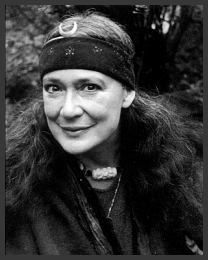
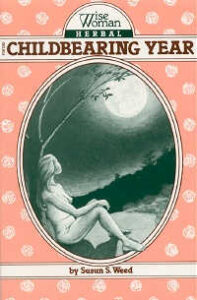
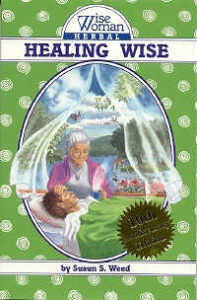
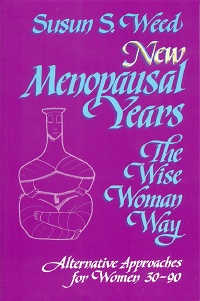
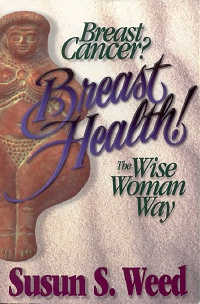
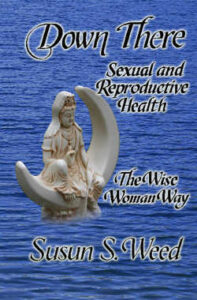
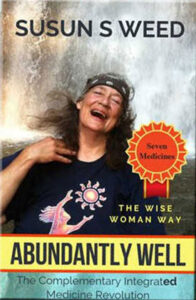
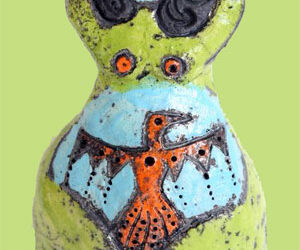
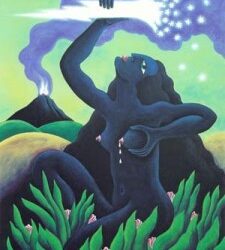
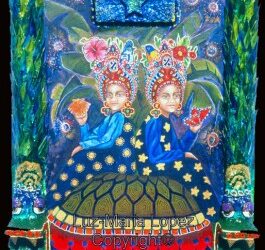
0 Comments